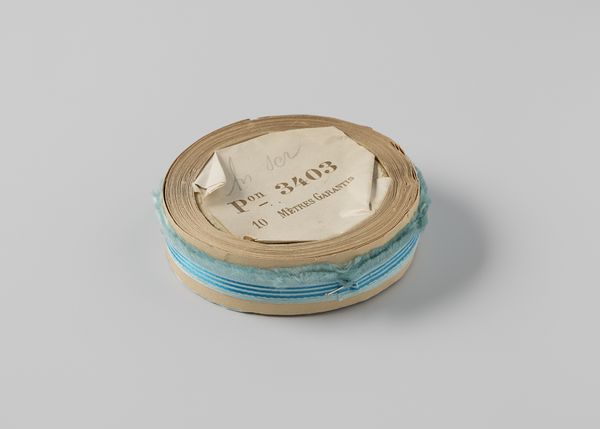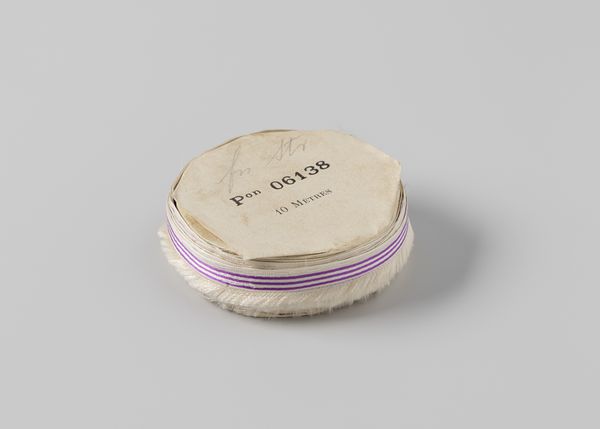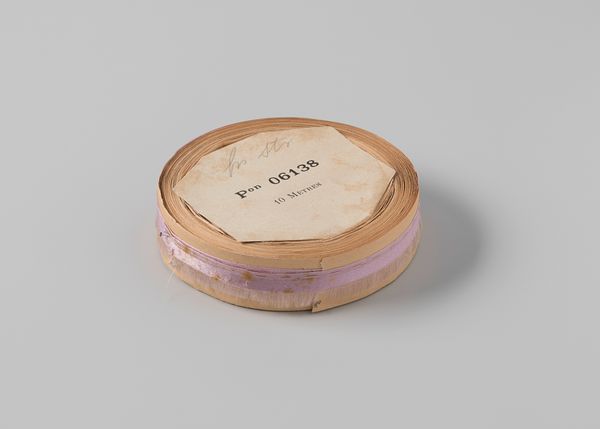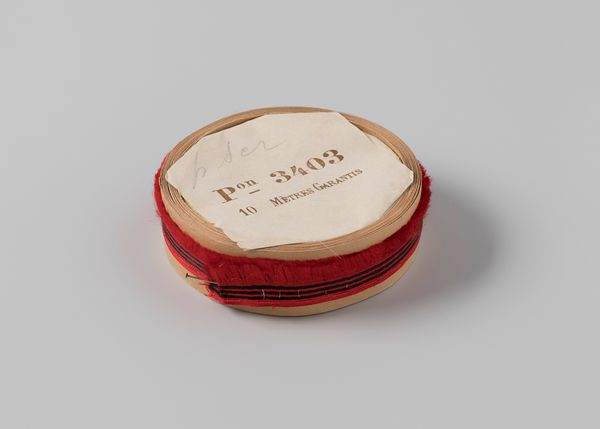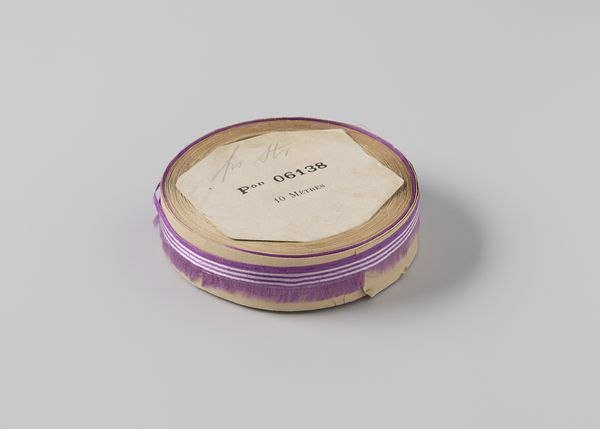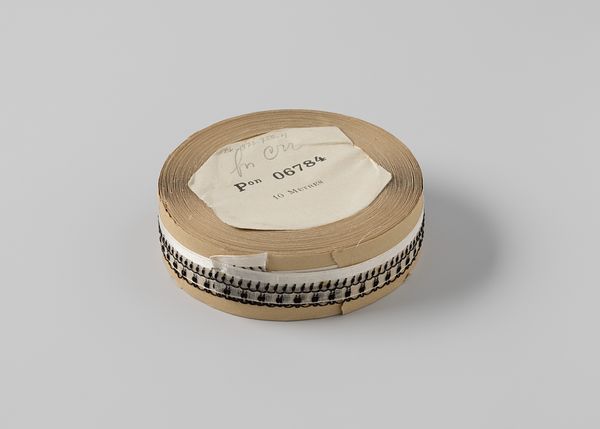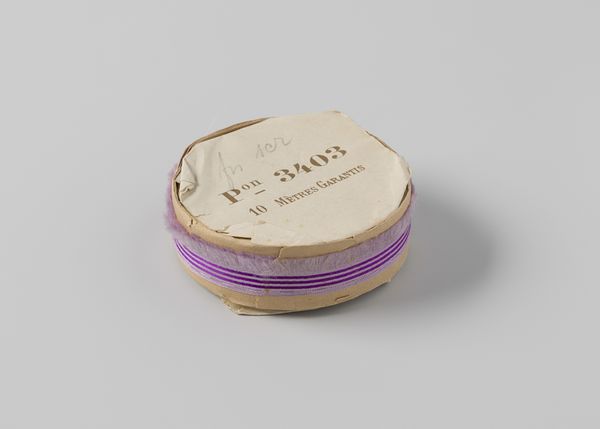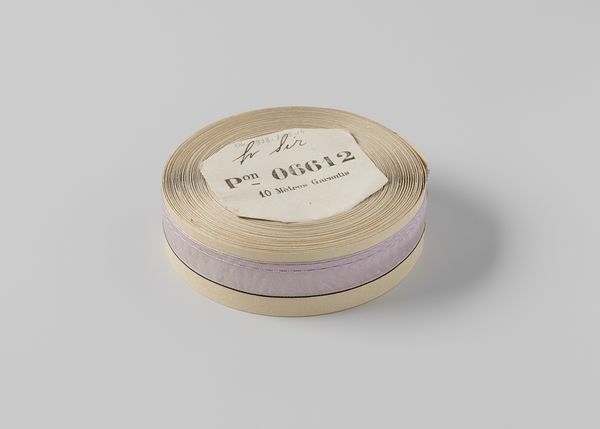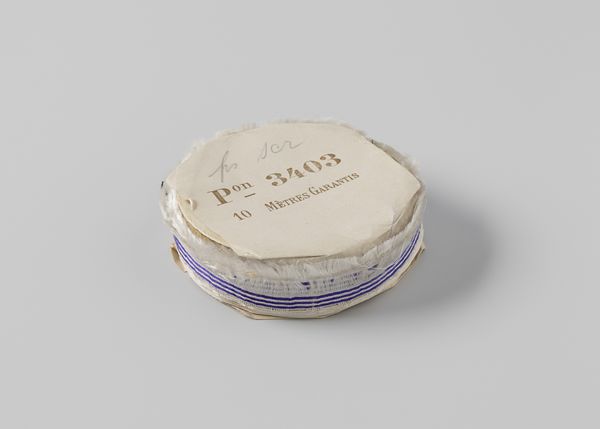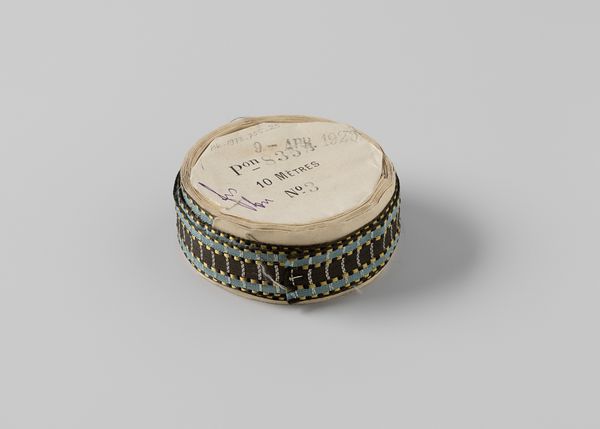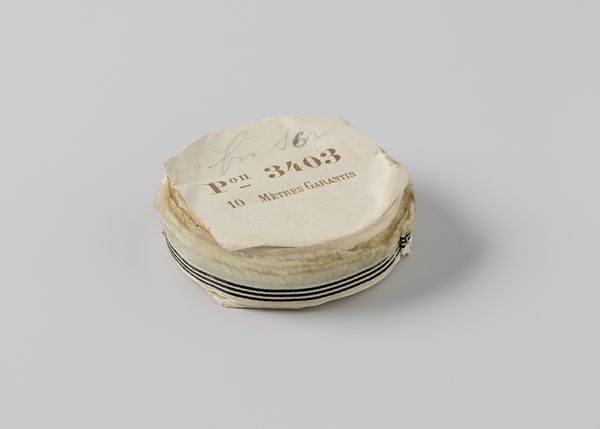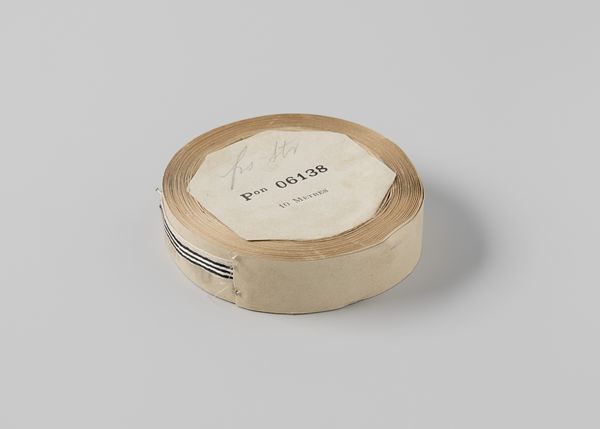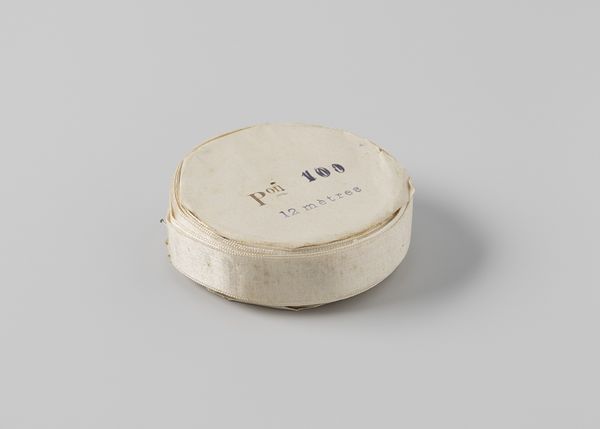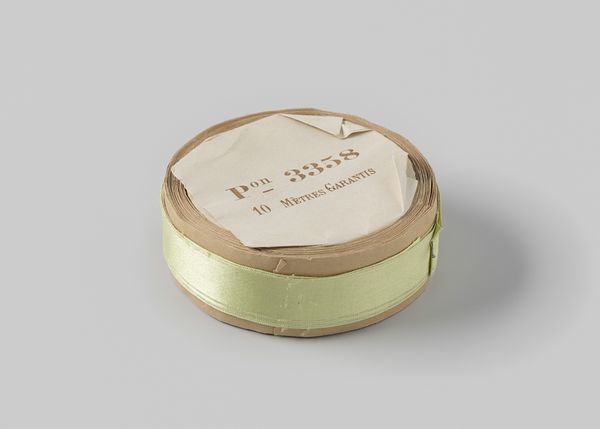
Rol met wit lint met één gerafelde zijde en drie blauwe horizontale strepen c. 1930
0:00
0:00
gustavschnitzler
Rijksmuseum
photography
#
still-life-photography
#
photography
#
geometric
Dimensions: width 1.5 cm, height 2.3 cm, diameter 9.5 cm
Copyright: Rijks Museum: Open Domain
Curator: Standing before us is a still life photograph from circa 1930 by Gustav Schnitzler, currently residing at the Rijksmuseum. It depicts a roll of white ribbon, featuring a single frayed edge and three horizontal blue stripes. Editor: My initial impression is one of quiet domesticity, perhaps a detail glimpsed from a seamstress's table. The palette is muted, and there's a palpable sense of stillness and delicate vulnerability conveyed by the slightly unkempt texture of the ribbon. Curator: The piece is titled "Rol met wit lint met één gerafelde zijde en drie blauwe horizontale strepen"—simply "Roll of White Ribbon…" While seemingly unremarkable, Schnitzler's deliberate framing invites a deeper consideration of everyday objects and their role within a social framework. Ribbon, of course, implies embellishment, class, labor, maybe the societal expectations placed upon women in that era? Editor: Exactly! Ribbon itself is deeply symbolic. Throughout history, it's denoted status, commemoration, even mourning. These blue stripes could represent allegiance or connection to a specific organization or cause. The unraveling edge is also striking. It introduces a sense of entropy, the decay inherent in the passage of time, or perhaps a hint of resistance to the perfect, constrained form. Curator: The artist might have been exploring themes related to industrialization and consumer culture. Mass-produced items became commonplace. We are meant to examine not only its aesthetic value, but also its socioeconomic and political significance. What commentary could he be crafting here? Editor: The paper label tucked into the center is another compelling layer. What is printed on the paper? The specific lettering, font, even its placement evoke a particular period, anchoring the object in time. I think of cultural memory, these are powerful cultural symbols! Curator: Ultimately, it's about how a mundane artifact can illuminate larger narratives around production, gender, and the ephemeral nature of everyday life. It's a clever commentary disguised as a quiet moment. Editor: An evocative testament to the power of seemingly insignificant objects.
Comments
No comments
Be the first to comment and join the conversation on the ultimate creative platform.
